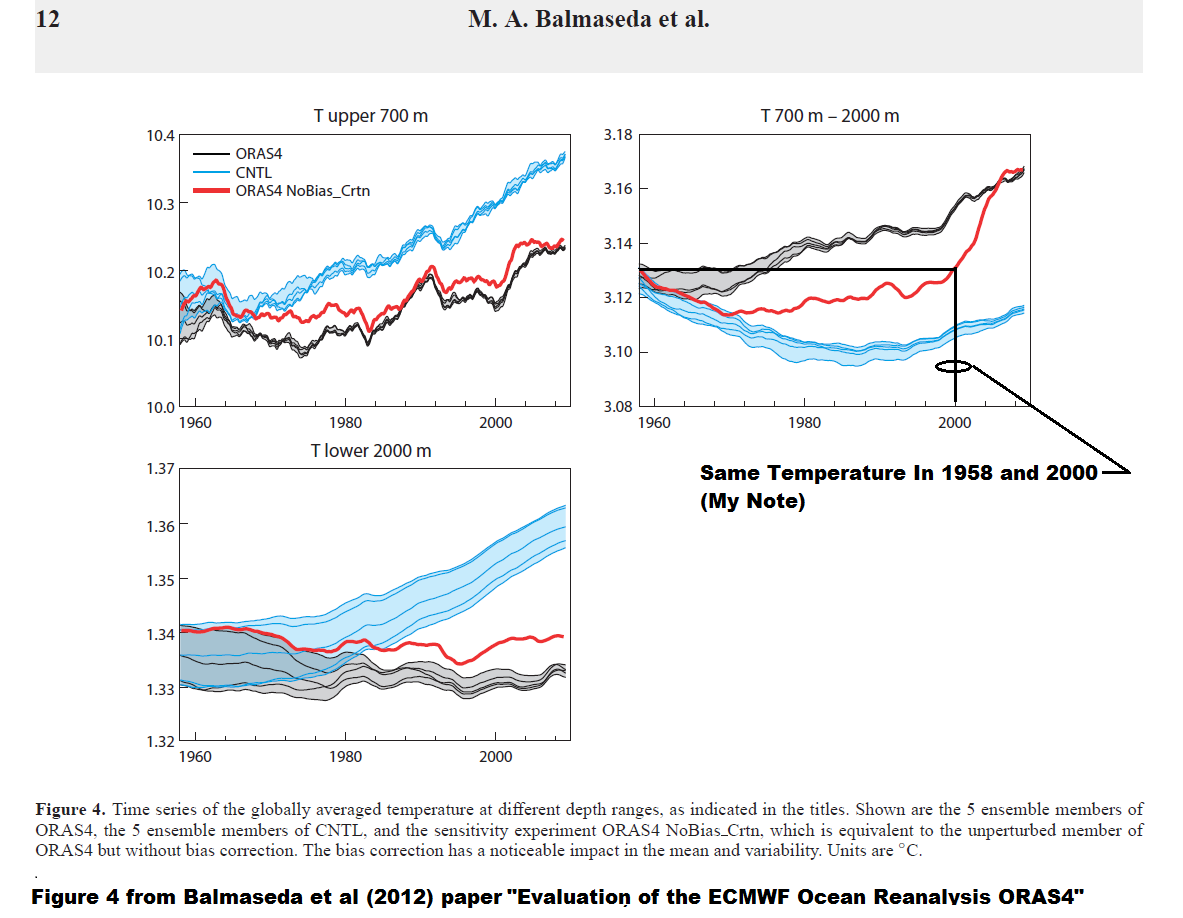It WOULD --- if you absolutely restarted the model with rel data values every 10 days. But what im saying is it makes more sense to use the real data to reweight where the model is takin you. So the restart MODIFIES and DIRECTS the output, but is not actually assuming the data values. In other words, the truth data is an input like every other variable in the model and is given a weighting that guarantees general agreement with the data, but allows the model to find its own contributions to the result..
Like those suspicious volcanic events for instance....

From BTK 2013:
2 The Ocean Reanalysis
[6]
ORAS4 has been produced by combining, every 10 days, the output of an ocean model forced by atmospheric reanalysis fluxes and quality controlled ocean observations. These consist of temperature and salinity (T/S) profiles from the Hadley Centre's EN3 data collection [Ingleby and Huddleston, 2007], which include expendable bathythermographs (T only, with depth corrections from Table 1 of Wijffels et al. [2008]), conductivity-temperature-depth sensors (T/S), TAO/TRITON/PIRATA/RAMA moorings (T/S), Argo profilers (T/S), and autonomous pinniped bathythermograph (or elephant seals, T/S). Altimeter-derived along track sea level anomalies from AVISO are also assimilated. Gridded maps of SST from NOAA are used to adjust the heat fluxes via strong relaxation, and altimeter global mean sea-levels are used to constrain the global average of the fresh-water flux. The ocean model horizontal resolution is approximately 1°, refined meridionally down to 1/3° at the equator. There are 42 vertical levels with separations varying smoothly from 10 m at the surface to 300 m at the bottom, with partial cell topography.
[7] A model bias correction [BMW13] is used to reduce potential spurious variability resulting from changes in the observing system. The bias correction first guess—a seasonal cycle of 3-D model error—is estimated from the data-rich Argo period, and applied to ORAS4 from the beginning of the record. This is updated as the analysis progresses via an adaptive scheme (see BMW13 for details; see also Figure S3 of the auxiliary material). The five ensemble members of ORAS4 sample plausible uncertainties in the wind forcing, observation coverage, and the deep ocean. The uncertainty is probably underestimated in ORAS4, because the uncertainty in observations and their quality control [Lyman et al., 2010] is not sampled. Quality improvements in ORAS4 relative to earlier ocean reanalyses stem from the use of improved atmospheric surface fluxes, improved data assimilation, and more comprehensive quality-control of the observation data set, with important corrections to the ocean observations.
[8] The methods section S01 in the auxiliary material provides more specific information on the model, surface forcing, observation data sets, bias correction and ensemble generation. A detailed description and evaluation of ORAS4 is given in BMW13, and a discussion of the sensitivity of the reanalysis to several aspects not included in the ensemble generation.
*******************************************************************
The purpose of using the ORAS4 model is to EXTRAPOLATE from the actual measurements an estimation of the state of the remainder of the ocean and produce an accurate estimate of ocean heat content extending deeper than 2000m as well as into unsampled areas.


